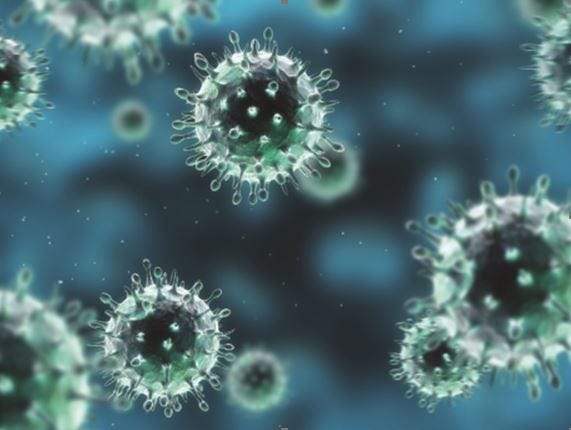Notre Dame Engineers ‘Light Up’ Flu Detection
 Smith says the technology's scalability sets it apart. He believes it could identify the virus in thousands of samples "in one shot."
Smith says the technology's scalability sets it apart. He believes it could identify the virus in thousands of samples "in one shot."
Subscriber Benefit
As a subscriber you can listen to articles at work, in the car, or while you work out. Subscribe NowThe flu season is nearly upon the U.S., and it could be a bad one, say flu experts. Typically, the southern hemisphere’s flu season is a predictor for the northern hemisphere, as the two have opposing seasons. Experts say it doesn’t bode well for the U.S. that Australia is having a worse flu season than normal, with more than double the flu cases than last year. Detection is an important aspect of managing influenza, and a University of Notre Dame researcher has developed what he calls a simpler, faster and more scalable method that makes the virus “light up” red in a sample.
Notre Dame Emil T. Hofman Professor of Chemistry and Biochemistry Dr. Bradley Smith just returned from Australia, where—ironically—he personally battled a case of the flu. He says conventional detection tools require a blood sample, a time-consuming analysis of the virus’ DNA and about a two-day turnaround.
The method he’s developing requires only a nose or mouth swab, and results could be instantaneous. His technology centers on enzymes within the flu virus that have “cutting” ability; this characteristic allows the virus to “cut” into our cells. Smith and his research team have invented dye molecules that seek out and attach to these cutting enzymes.
“The enzyme cuts the dye molecule, breaks it in half, and the fluorescence that [the dye molecule] gives off changes color from blue to red,” says Smith. “If the enzyme is present and operational, then suddenly, you’ll get red light back. So if it’s red, you have the flu.”
Shining a blue light on the sample produces the fluorescence. Ultimately, Smith envisions the method as a self-contained kit, housing a miniaturized laser and analyzer that would give the user a simple “yes” or “no.”
Smith says the test could also determine if Tamiflu or Relenza, antiviral medications that block the flu virus and lessen symptoms, would be effective in a person’s particular case of the flu.
“There are many different strains [of the flu], and you can be infected with a strain in which one or both of those drugs do not work,” says Smith. “You don’t want to be using the drugs for no purpose, because it’s expensive, but also there’s potential to develop further resistance down the line—we all recognize continued drug use builds up resistance amongst viruses.”
While Smith’s method could identify the flu virus in an individual, or even on a surface, he says its scalability sets it apart; he believes the test could potentially be used to analyze hundreds of thousands of samples “in one shot.”
“When we think about its eventual application, it’s more in a circumstance where there’s a wide pandemic or, God forbid, a terrorist attack or something like that, where there’s potentially hundreds of thousands of infected people,” says Smith. “Imagine an entire building is being infected, and you think it’s been disinfected, but you’d like to test thousands of sites around the building. You need a technology that could test thousands of samples all in one go—that’s the long-term potential application of our technology, because it can be scaled very easily.”
Smith believes the platform is versatile and could be applied to different diseases; in fact, he says an “aha moment” led him to apply the method to influenza as he was researching something else. His lab is also evaluating the concept for the classification of cancer tissue to personalize treatment.
Smith says the technology is now navigating what researchers call “The Valley of Death,”—the gap between academic discovery and commercialization—where good ideas are shelved for lack of funding and other resources. He’s hopeful the university’s Advanced Diagnostics & Therapeutics will provide the engineering expertise to “shrink” his technology into a user-friendly kit—a small device that could have a big impact on future flu seasons.
Smith describes how his method could have the greatest impact in a widespread outbreak.
Smith says engineering collaborations will help him advance the technology to the self-contained kit that he envisions.
Smith says developing a technology that could impact people’s lives motivates him.
